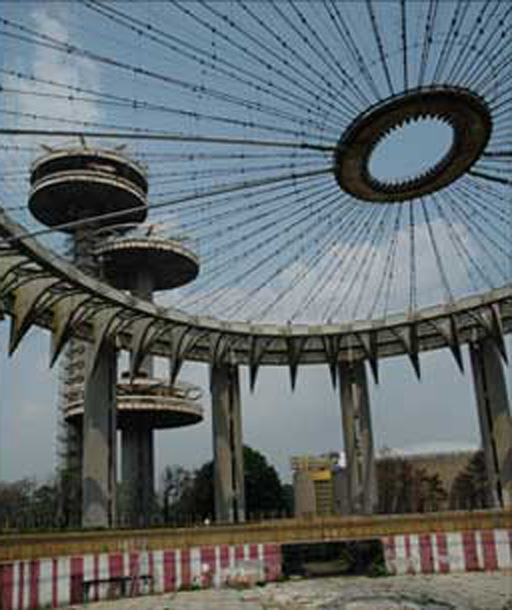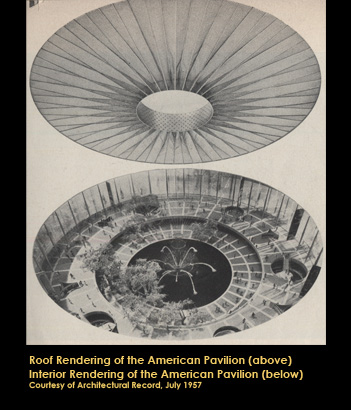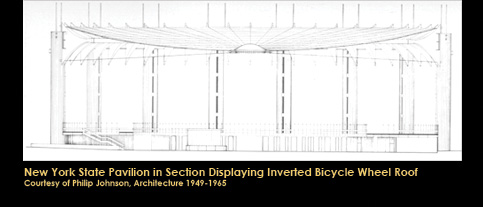
Edward Durell Stone’s design for the American Pavilion at the 1958 Brussels Universal and International Exposition most likely influenced Johnson’s design for the New York State Pavilion. Although Johnson never publicly acknowledged borrowing from Stone’s work, several similarities between the two temporary fair pavilion designs are nonetheless quite apparent. Whereas Stone’s American Pavilion adhered to a more orthodox modernist design, Johnson chose to incorporate historical references, ornamentation, and forms from popular culture into his New York State Pavilion design. The result was a more colorful and playful version meant to appeal to the public and the fairgoers’ sense of recreation. In the words of Nathan Silver, Johnson’s enormous Pavilion “…somehow captured, without belittling, the spirit of public assembly for entertainment…[an] affirmation of people’s importance and noble character, amid denial and doubt.”
Both designs were open-air pavilions designed to be temporary, although Stone incorporated a perforated screen exterior to give the impression of a cage surrounding a garden. The Seal of the United States hung above the main entrance to the American Pavilion. The Seal of New York State hung above the main entrance to the New York State Pavilion. Within the main entrance to the American Pavilion one could find an exhibit which included a large scale map of the United States. This map may have been Johnson’s initial inspiration for including the Texaco Road Map as a pavement.

To allow the maximum amount of natural light into the structures, translucent, plastic roof panels were incorporated in both designs. The panels were produced by the same manufacturer, Kalwall Corporation. Whereas Stone’s design focused on filling the interior with maximum light, Johnson seized the opportunity to create a more literal interpretation of a circus tent by adding festive hues of orange, violet, pink and blue. The interior of the American Pavilion included a small balcony accessible by stairs. The New York State Tent was designed with a continuous mezzanine accessed by escalators to view the great map pavement.

Both designs were open-air pavilions that created record-breaking interior free spans through the use of the most modern tensile cable roof technology of their day. In the case of the American Pavilion, the roof showcased the world’s first “bicycle wheel” roof developed by structural engineer Blaton Aubert. For the New York State Pavilion, the structural engineer Lev Zetlin inverted the structural design and overall roof shape by shifting the large central steel ring to the exterior. This roof was likewise the first of its kind to be constructed. The modification eliminated the large central mass thereby creating a lighter and more open interior space than that of the American Pavilion.
